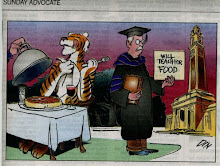
The rich and famous are much in the news these days—colleges and universities that is, the ones with endowments in the hundreds of millions or more and whose run-up in assets has raised questions about their non-profit status from both state and federal lawmakers. The U.S. Senate Finance committee wants to know, for example, why institutions that are reported to average 20 percent annual increases in the market value of endowments of $500 million or more still need to raise tuition and fees every year. And the Internal Revenue Service is preparing for intensive audits of more than 400 institutions, looking at revenue-generating activities housed within them and how those activities fulfill the public or charitable purposes of the institutions. Meanwhile, legislation has been proposed in Massachusetts to levy state taxes on the Commonwealth’s wealthiest non-profit private institutions.
Media and policy attention to the wealthiest sector of higher education might cause the public and policy makers to think that most colleges and universities are awash in money—and looking only at the Ivy League and the biggest public research universities, it would be hard to argue that they’re mistaken. But the focus on revenue masks the bigger story in higher education finance in America, which is a story of growing gaps between rich and poor institutions, greater clustering of low-income students in poorly financed institutions, and disinvestment in teaching. Any one of these trends by itself would be disturbing; the three together spell real trouble for our future capacity to reverse America’s decline in postsecondary performance.
There's more


No comments:
Post a Comment